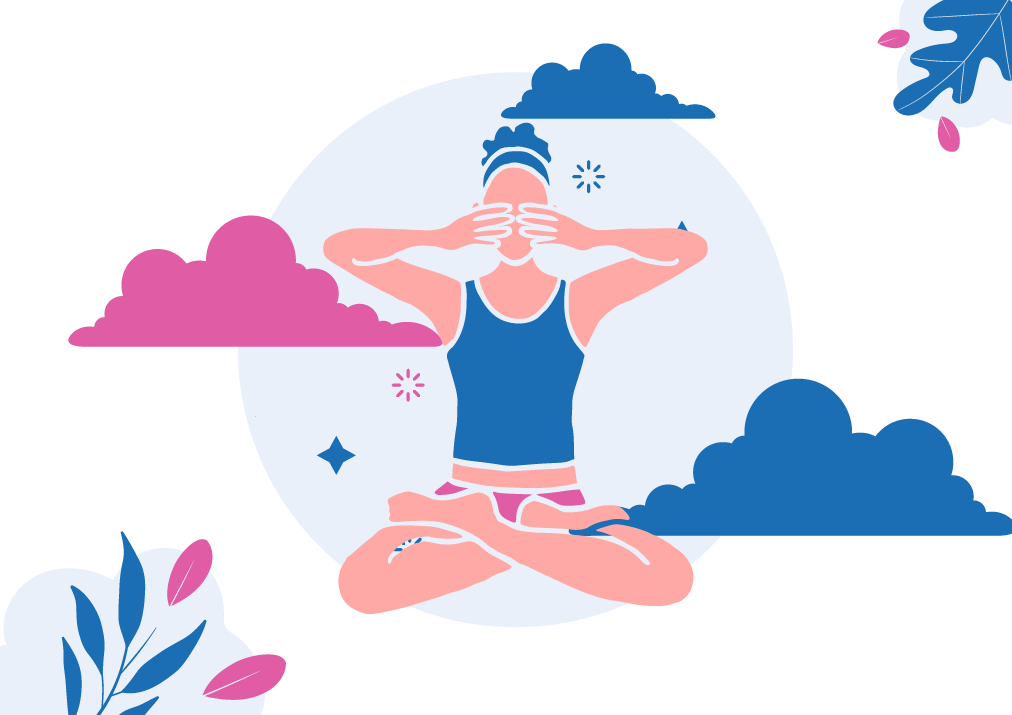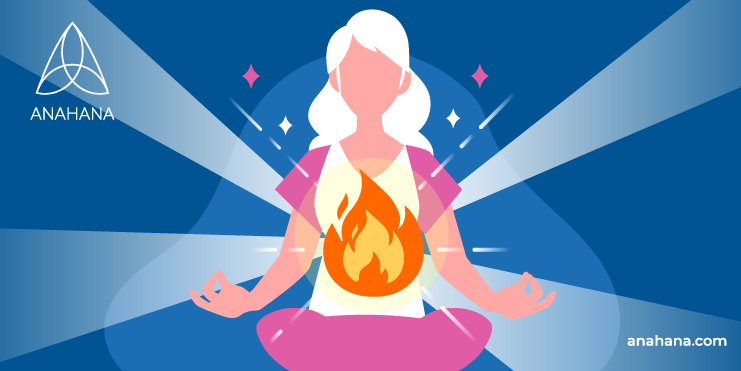Wim Hof Breathing Method
The Wim Hof Method is a three-step process developed by the legendary Iceman. Wim Hof has set numerous World Records about his ability to withstand...
Like the beating of your heart, your respiratory system doesn’t need monitoring to continue on — every second, of every minute, of every hour, of every day. It’s performing autonomously.
Breathing is one of the few bodily functions that are both voluntary and involuntary. Although many believe they do not need to think about their breathing, this article counters this notion. It explains why conscious breathing (or breathing mindfully) is life-changing in how people think and process emotions, how their muscles work, how often they get ill, and their chances of developing chronic diseases. All it takes is some breath focus.
To begin with, this article discusses the origins and evolution of mindful breathing. From there, it emphasizes the importance of breathing exercises by explaining the anatomy and physiology of the respiratory system. It then moves on to how people can apply this information to improve their breathing habits and some of the most frequently asked questions regarding better breathing.
 For thousands of years, Eastern cultures have practiced breathing exercises to restore and enhance one’s health.
For thousands of years, Eastern cultures have practiced breathing exercises to restore and enhance one’s health.
A well-known example is yogic breathing or pranayama. Pranayama is an ancient practice of controlled breathing performed with meditation or yoga. Various forms of pranayama are designed at varying rates and depths. Examples may include nostril breathing (either double, single, or alternate), abdominal breathing, forceful breathing, and vocalized or chanting breathing.
In the late 1800s, yoga, and therefore also pranayama, was introduced to the West and rose in popularity during the mid-1900s. Since then, breathing techniques have become increasingly popular. Various new techniques, such as the Buteyko method, have been created due to their claimed health benefits and potential for treating different medical conditions.
Now that we have a better understanding of the system that regulates the breathing process, we will better understand the impacts that mindful breathing has on the body. Diaphragmatic breathing is a technique where slow and deep breaths, usually ranging in about six seconds per inhale or exhale, respectively, are taken through the nose using the diaphragm such that there is minimal upper chest movement. From reduced stress to better posture, breathing exercises affect the whole body from the inside out.
As mentioned above, breathing is more than taking air in and out, inhaling, and exhaling. It depends on which breathing technique you find works for you, as they all achieve different objectives. Some will correlate with others, while others don’t.
 Square breathing is a technique based on a square framework: breathing in, to the count of four, holding to the count of four, breathing out to the count of four, and finally holding to the count of four. This process is repeated over and over for anywhere between five to 20 minutes. The amount of time can also be extended to six or even eight seconds once you have started to master this technique. Box breathing can help with anxiety, stress, shallow breathing, or sleeping disorders. Here you can find additional box breathing benefits.
Square breathing is a technique based on a square framework: breathing in, to the count of four, holding to the count of four, breathing out to the count of four, and finally holding to the count of four. This process is repeated over and over for anywhere between five to 20 minutes. The amount of time can also be extended to six or even eight seconds once you have started to master this technique. Box breathing can help with anxiety, stress, shallow breathing, or sleeping disorders. Here you can find additional box breathing benefits.
Dr. Andrew Weil first developed this exercise known as 4-7-8 or four seven eight breathing. It's similar to box breathing: inhale slowly to the count of four, hold to the count of seven and exhale slowly to the count of eight. Like box breathing, this technique lasts between five to 20 minutes or several times daily, depending on the needs. This exercise helps to sleep better, lower blood pressure, eliminate rapid breathing, and improve digestion.
Mindful breathing is a deep technique focusing on conscious awareness with each exhale and inhale.
Compared to normal breathing, paradoxical breathing happens when the diaphragm moves in the opposite direction when taking a breath.
This style focuses on deep inhales, where both chest and belly fill up with air. This is why diaphragmatic breathing is referred to as abdominal breathing or belly breathing. It is the opposite of shallow breathing techniques. During diaphragm breathing, you will notice your belly rising followed by chest elevation. The exhale should happen in the same order.
Ujjayi breathing is a breathing style that is said to help control the breath, improve lung capacity, and alleviate stress. The word "ujjayi" comes from the Sanskrit words meaning "to conquer" or "to be victorious." This type of breathing is also sometimes referred to as ocean breath or victory breath due to its sound.
When performed correctly, ujjayi breathing should produce a soft hissing noise that is similar to the sound of waves crashing on the shore. Ujjayi breathing is often used in coordination with asana practice such as Vinyasa or Ashtanga yoga.
 This means “breath control” and is like Ujjayi breathing, a style of yoga. However, Pranayama breathing is also known as yoga breathing or yogic breathing. Pranayama is an overarching term for various breathing techniques.
This means “breath control” and is like Ujjayi breathing, a style of yoga. However, Pranayama breathing is also known as yoga breathing or yogic breathing. Pranayama is an overarching term for various breathing techniques.
This type of breathing is used with each posture or movement during pilates, similar to the Ujaji breath in yoga.
A breathing technique used to achieve an altered state of consciousness.
Like holotropic breathing, Wim Hof Breathing is also about achieving an altered state.
 It was developed by the ancient Tibetians, meaning “Inner Fire.” The breathing method uses both breathing and visualization to create this inner fire.
It was developed by the ancient Tibetians, meaning “Inner Fire.” The breathing method uses both breathing and visualization to create this inner fire.
Suffering from asthma, using this technique will help open up your airways to be able to breathe better. Buteyko breathing also helps reduce blood pressure, amongst other things.
This is a technique, an alternate breathing method based on a relaxed state, performing longer inhales mixed with bursts of short exhales.
It is a technique used by musicians playing a wind instrument. The object is to be able to purposely hold a continuous tone without stopping. They managed to perform this by breathing in through the nose while simultaneously pushing air out through the mouth. This is done using air stored in the cheeks.
Also known as Dirga Pranayama, and is another type of yoga breathing technique. It is by many seen as the most calming, grounding breathing exercise you can do in yoga.
Unlike most other breathing methods, mouth breathing is exactly what it sounds like. Here you only use your mouth to inhale and exhale.
A slow breathing style often used by pregnant women. It is done to help promote relaxation and reduce pain.
 This method promotes relaxation and stress reduction. In alternate nostril breathing, inhale occurs through one nostril while holding the second nostril closed with fingers, and exhale through the other nostril.
This method promotes relaxation and stress reduction. In alternate nostril breathing, inhale occurs through one nostril while holding the second nostril closed with fingers, and exhale through the other nostril.
Pursed lip breathing is a type of controlled breathing that helps you breathe more effectively. It is often used to relieve shortness of breath. When you breathe deeply with pursed lips, the inhale happens slowly through the nose while keeping the lips tightly pursed.
There are dozens of breathing exercises for improving breathing patterns and overall well-being. Some of the additional activities include:
Most people do not breathe correctly and think of breathing as a process composed of just an inhale and exhale. However, in truth, breathing is much more than just that. To breathe correctly, it is essential to consider the quality of your breathing, how you perform your exhales and inhales, and the specific patterns and time frames the air passes in and out. This can be done through the practice of breathing exercises.
Not all problems can be solved with a specific breathing technique. If you experience difficulty breathing, labored breathing, or abnormal breathing patterns that won't go away, seek medical attention as soon as possible or call 911.
You should also seek medical advice or breathing treatment if you experience any of the following issues:
There are several different techniques and tips that we recommend exploring on the journey toward healthier diaphragmatic breathing.
To test your breathing, put your right hand on your chest and your left hand on your stomach. Take a deep breath as you count to three. If the right hand (the one on your chest) is moving more than your left hand, you are breathing from the chest. If your left hand (the one on your stomach) moves more than your right hand, you breathe from your abdomen.
Poor breathing is short, shallow, and high up in the chest. Optimal breathing includes longer, deeper breaths and occurs low in the abdomen. When you breathe from your chest, the breaths taken will be short and shallow because you only scoop the air from the tops of your lungs. On the other hand, when you breathe from your abdomen, the breaths taken will be longer and deeper since most of the air is stored in the bottoms of your lungs which are larger and fuller.
As mentioned, there are several different symptoms one can experience when it comes to breathing issues, including, but not limited to, shortness of breath when under anxiety or stress, wheezing when breathing, heavy breathing, labored breathing, shallow breathing, and rapid breathing. Whatever the issue with your breathing, there is often some type of breathing treatment that can address some of these issues.
Most adults have a regular breathing rate of 12 to 18 beats per minute. If one can learn to breathe more slowly, this can be advantageous for cultivating better breathing habits. A recent article on the physiological effects of slow breathing notes that slow breathing significantly affects the respiratory, cardiovascular, cardiorespiratory, and autonomic nervous systems with notable impact on systems including respiratory muscle activity, blood flow dynamics, ventilation efficiency, and cardiorespiratory coupling.
Controlled slow breathing techniques also show the potential to improve physiological parameters associated with health and longevity. However, more research is still needed to prove this claim further.
You do not have to be an expert or have a lot of experience when taking a breathing lesson. Anyone can try it, young, old, men and women. We all have to start somewhere, so why not start now? This will allow you to breathe easier and improve your lung health, carrying a long-term effect regarding many different benefits mentioned above. You could find a breathing treatment that works for you and your condition. Not all breathing treatments or exercises fit everyone, so finding the one that meets your needs is essential.
During deep breathing practice, it is often the protocol to breathe in through the nose and out through your mouth. According to the American Lung Association, the nostrils "filter, warm, and humidify the air in a way that the mouth cannot.”
Sometimes mouth breathing is inevitable (for example, when you have nasal congestion or are exercising), but overall, breathing through the nose is preferable.
Not really. These terms refer to the same type of breathing practice wherein breaths are taken deeply, slowly, and low — from the diaphragm.
The beneficial results will show up reasonably quickly. It's important to remember that these benefits will not be life-changing immediately as it takes time to cultivate a robust deep breathing practice.
The good news is the benefits will only increase with time. Not only will the lung capacity for air expand and a habit of turning to the breath in times of stress and anxiety develop, but the overall physical and emotional effects will be working all the while in the background, even if not felt on the physical level.
Some people may feel awkward if they practice deep breathing in front of others. However, there shouldn’t be a feeling of self-consciousness about the way you breathe. If practicing alone or under supervision is more comfortable, this is perfectly fine.
On the other hand, if you are experiencing agitation or anxiety in a social situation, taking a deep breath or two at this point can be especially useful. For this reason, you may want to excuse yourself to the restroom to do some deep breathing in private.
There’s no hard-and-fast rule here. If you can, we recommend partaking in a meditation practice, which is the perfect time to work on your breathing. Even if you don't meditate regularly, taking a few moments out of your day to do some deep breathing will be beneficial.
By practicing breath awareness, you’re making the first step toward building a better breathing habit. You can set aside time to do some deep breathing every day or do it while partaking in another relatively idle activity — for example, while chopping vegetables, taking a bath, or waiting in line at the bank drive-through. It can be hard to focus on breathing quality in high-stress and fast-paced environments. Still, this is when noticing your breath is most beneficial.
No matter what the starting point is, better breathing improves life. You must consult your physician before starting a new reading practice if you struggle with asthma, COPD, or other lung-related medical conditions. At the same time, these conditions shouldn't hold you back from working toward better breathing habits. Everyone can benefit from becoming more mindful of and in tune with their breathing.
5 Benefits of Square Breathing
Anatomy, Thorax, Diaphragm - StatPearls - NCBI Bookshelf (info for anatomy of thorax & diaphragm)
Anatomy, Thorax - StatPearls - NCBI Bookshelf (info on the anatomy of thoracic cavity/thorax -- includes info on the thoracic cage, intercostal muscles)
Anatomy, Thorax, Lung Pleura, And Mediastinum - StatPearls - NCBI Bookshelf (info on pleural sac)
Breathing matters - PMC (includes info on active inspiration / active or passive exhalation)
Physiology, Respiratory Drive - StatPearls - NCBI Bookshelf (info on the physiology of respiratory muscles AND deeper info on the respiratory drive - thoracic neural receptors, peripheral and central chemoreceptors, respiratory drive during sleep…)
How do lungs work? - InformedHealth.org - NCBI Bookshelf (basic info on how lungs work in pulmonary circulation & bronchi structure...)
Anatomy, Airway - StatPearls - NCBI Bookshelf (info on anatomy/physiology of structures involved in the airway - ex: pharynx, larynx, trachea, bronchioles, …)
Effects of Diaphragmatic Breathing on Health: A Narrative Review - PMC (use in the origin of breathing techniques section for a description of diaphragmatic breathing and its general benefits)
The physiological effects of slow breathing in the healthy human - PMC (history of breathing exercises, physiological effects of slow breathing)

The Wim Hof Method is a three-step process developed by the legendary Iceman. Wim Hof has set numerous World Records about his ability to withstand...

Even though we are all breathing constantly, most people do not practice diaphragmatic breathing, which is how to breathe properly. The benefits from...

Buteyko is a method of breathing that decreases the respiration rate, that is reducing the number of breaths taken each minute to slow the breathing...